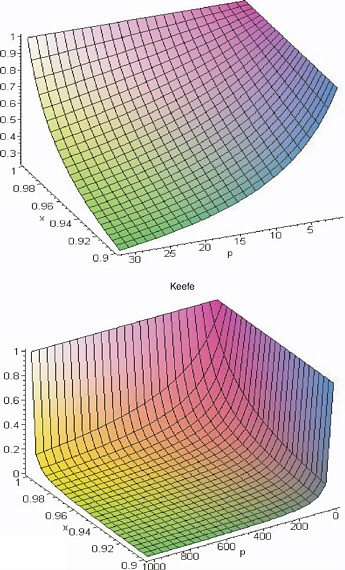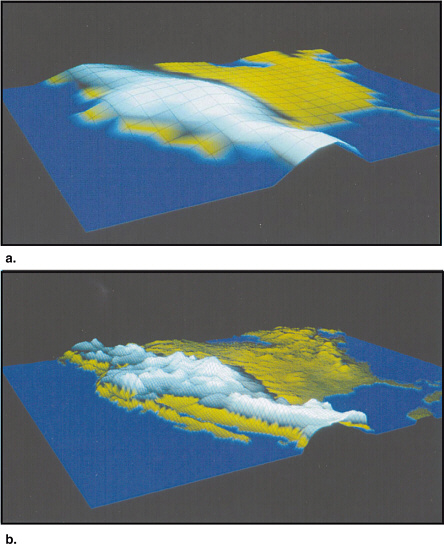
PLATE 1 Amdahl’s Law: Impact of the number of processors (axis labeled p) on the parallel efficiency (vertical axis) for a range of code parallelization (axis labeled x), between 90% and the ideal but unattainable 100%. a) Multiprocessing system with a number of processors between 1 and 32. Note that the greenish area, representing practically attainable efficiencies, ranges from over 20% for low parallelization to well over 50% for high parallelization. b) Massively parallel processor, with 40 to 1024 processors. Note that the attainable ranges of efficiency are well below 10% except for the hard-to-reach highest ranges of code parallelization (over 99%).



